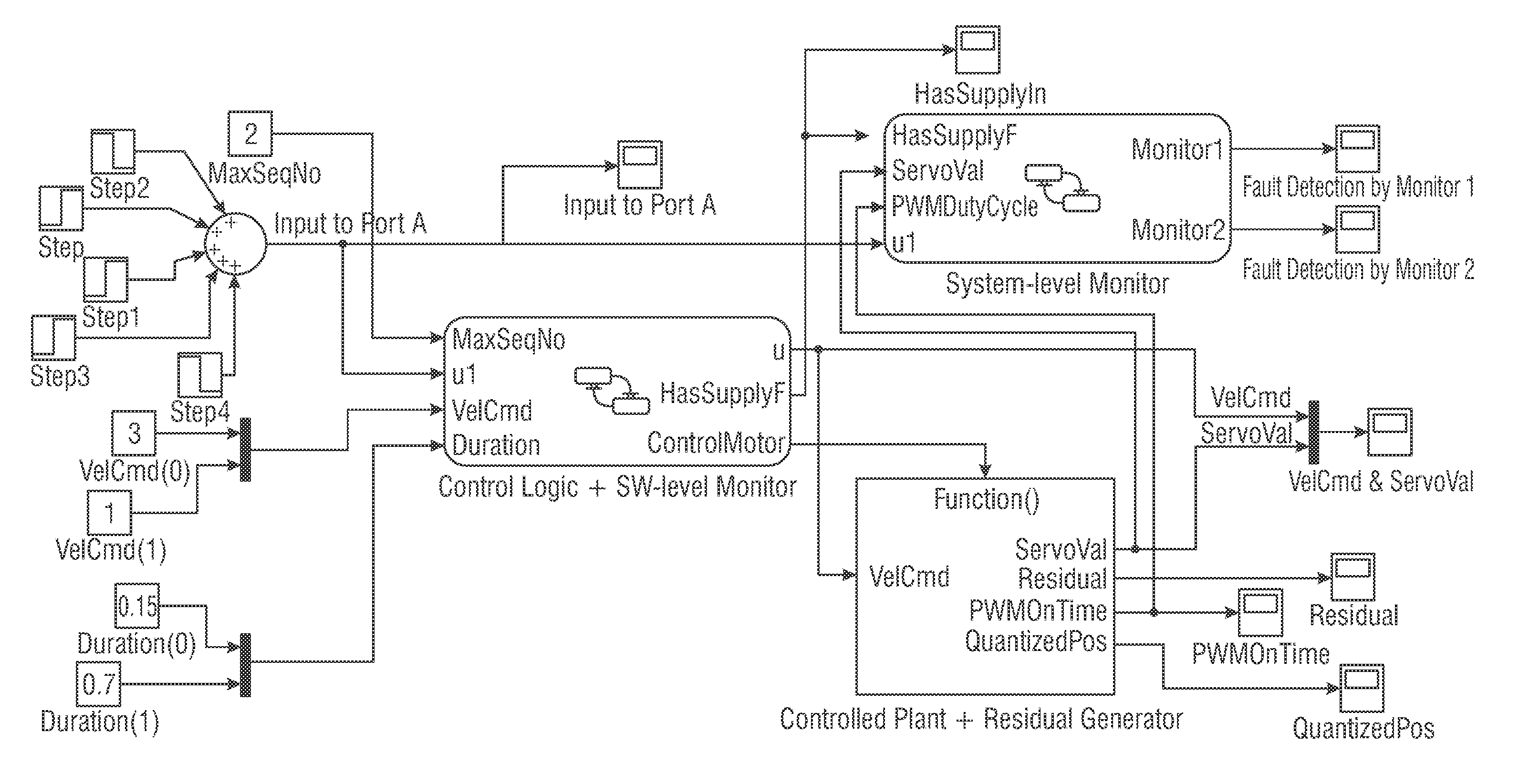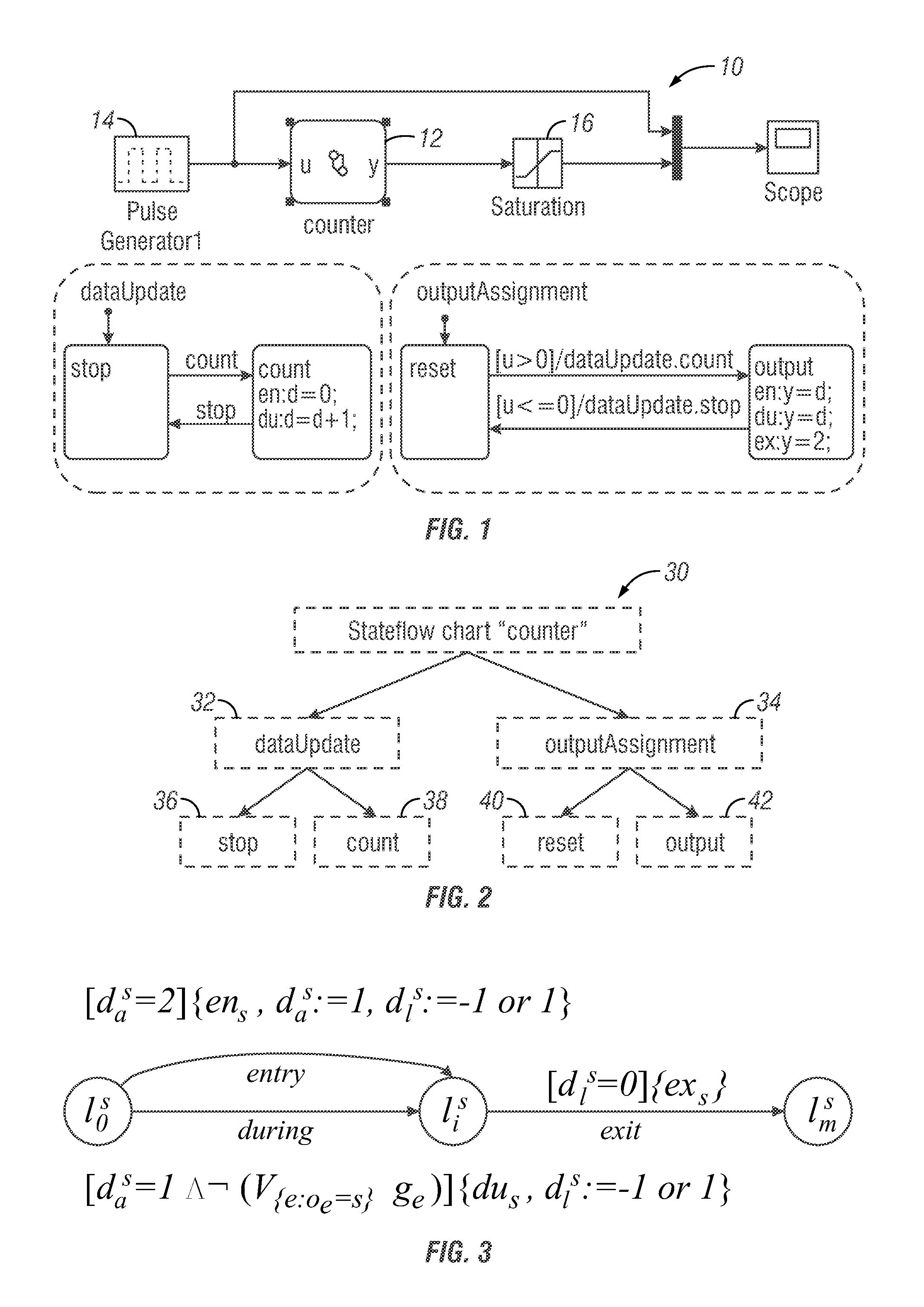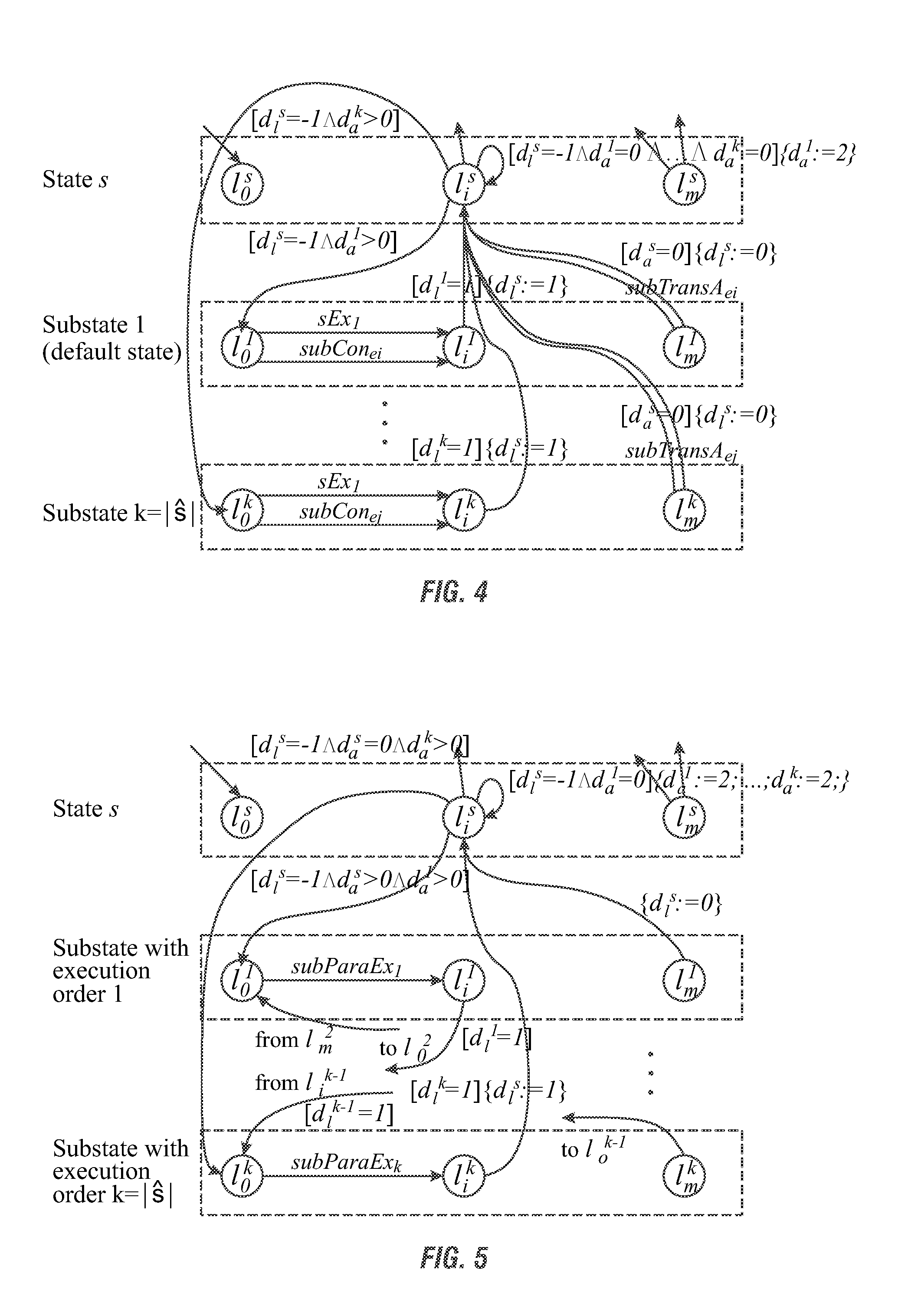Semantic translation of stateflow diagrams into input/output extended finite automata and automated test generation for simulink/stateflow diagrams
a stateflow diagram and stateflow translation technology, applied in the field of semantic translation of diagrams, can solve problems such as not providing a model that makes it amenable to formal analysis
- Summary
- Abstract
- Description
- Claims
- Application Information
AI Technical Summary
Benefits of technology
Problems solved by technology
Method used
Image
Examples
example 1
[0154]Consider the counter system of FIG. 1. It can be translated into an I / O-EFA model as follows:[0155]1. Modeling states: We first construct atomic model for each of the seven states (including the Stateflow root) of FIG. 2.[0156]2. Modeling state hierarchy: We apply OR Complex State Composition Rule (Algorithm 2) on the models obtained in step 1 of the two bottom-level OR complex states, and AND Complex State Composition Rule (Algorithm 3) on models obtained in step 1 of the top-level AND complex state.[0157]3. Modeling local events: Each edge in the model obtained in step 2 containing the event “count” or “stop” is replaced with a pair of edges to connect the source state “outputAssignment” and the destination state “dataUpdate”, in either direction. At the same time the evaluation of “count” (resp., “stop”) is modified to dev1=1 (resp., dev2=1).[0158]4. Obtaining final model: The model obtained in step 3 is augmented by applying Algorithm 5 to obtain a final model (this step i...
example 2
[0160]The simulation result comparison between the I / O-EFA model of the counter (see FIG. 8) and the original counter system (see FIG. 1) is shown in FIG. 9. The simulation (using Intel Core 2 Duo P8400 2.27 GHz, 2 GB RAM) time is 4 seconds with sampling period of 0.03 seconds, and the results are consistent with the behaviors of the counter.
example 3
[0161]This example is of a servo velocity control system consisting of a controller, a fault monitor (both written in Stateflow), and a motor (written in Simulink). The Simulink / Stateflow diagram of the servo velocity control system is translated by our translation tool. The CPU time (using Intel Core 2 Duo P8400 2.27 GHz, 2 GB RAM) for the translation is 45.1 seconds and the translated model has 382 locations and 646 edges. The simulation result of the translated model (shown in FIG. 11) is identical to the discrete behaviors of the original Simulink / Stateflow model.
VIII. Introduction to Model-based Automatic Test Generation for Simulink / Stateflow Using Extended Finite Automaton
[0162]As previously explained, Simulink / Stateflow [4] is a model-based development tool, which is widely used in many industrial domains, such as power systems, nuclear plants, aircraft, and automotives. Code generators are used within the Simulink / Stateflow to automatically generate the embedded software fo...
PUM
 Login to View More
Login to View More Abstract
Description
Claims
Application Information
 Login to View More
Login to View More - R&D
- Intellectual Property
- Life Sciences
- Materials
- Tech Scout
- Unparalleled Data Quality
- Higher Quality Content
- 60% Fewer Hallucinations
Browse by: Latest US Patents, China's latest patents, Technical Efficacy Thesaurus, Application Domain, Technology Topic, Popular Technical Reports.
© 2025 PatSnap. All rights reserved.Legal|Privacy policy|Modern Slavery Act Transparency Statement|Sitemap|About US| Contact US: help@patsnap.com



